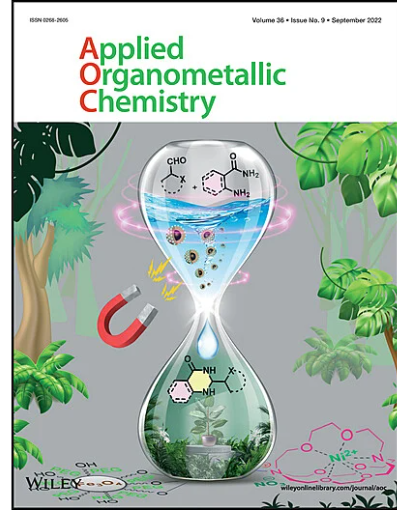In Situ Growth of Iron-Based MOFs on Carboxylated Cotton Fabrics for Removal of Rhodamine B by Photocatalysis
Abstract
There are tremendous potential in utilizing metal–organic frameworks (MOFs) for enhancing the removal of organic dyes from wastewater. However, the recovery of powdered catalysts poses a significant challenge. In this study, four different iron-based metal–organic frameworks (Fe-MOFs) were synthesized by growing them in situ on carboxylated cotton fabrics. Scanning electron microscopy (SEM), X-ray diffraction (XRD), and X-ray photoelectron spectroscopy (XPS) were employed to conduct a comprehensive characterization of the Fe-MOFs. The dye removal rate of Fe-MOF@Cotton was meticulously determined by comprehensively investigating various factors including the concentration of the dye and hydrogen peroxide (H2O2), the pH value of the solution, and the temperature. Extensive catalytic degradation experiments were conducted to assess the performance of Fe-MOF@Cotton. The results vividly demonstrated that Rhodamine B (RhB) was photocatalytically degraded by Fe-MOF@Cotton with remarkable efficiency in the presence of H2O2. Notably, the four MOF fabric composites were capable of degrading over 97% of RhB with a concentration of 20 mg/L. Moreover, these composites exhibited excellent reusability, strongly indicating their significant potential for application in the dye wastewater treatment industry. This not only highlights the effectiveness of Fe-MOF@Cotton in dye removal but also offers a promising avenue for addressing the challenges associated with dye-contaminated wastewater treatment.


 求助内容:
求助内容: 应助结果提醒方式:
应助结果提醒方式:


